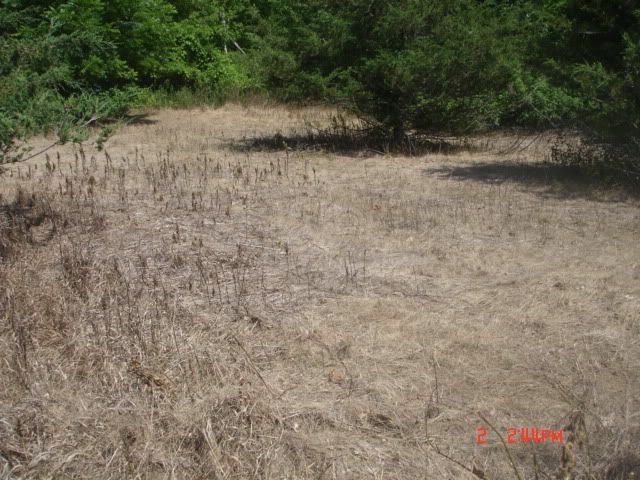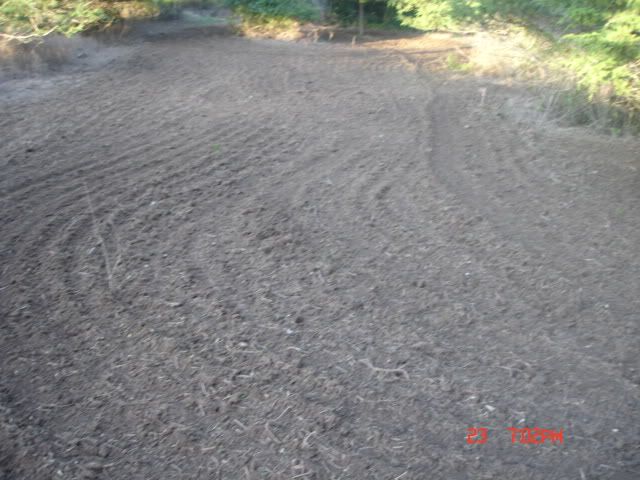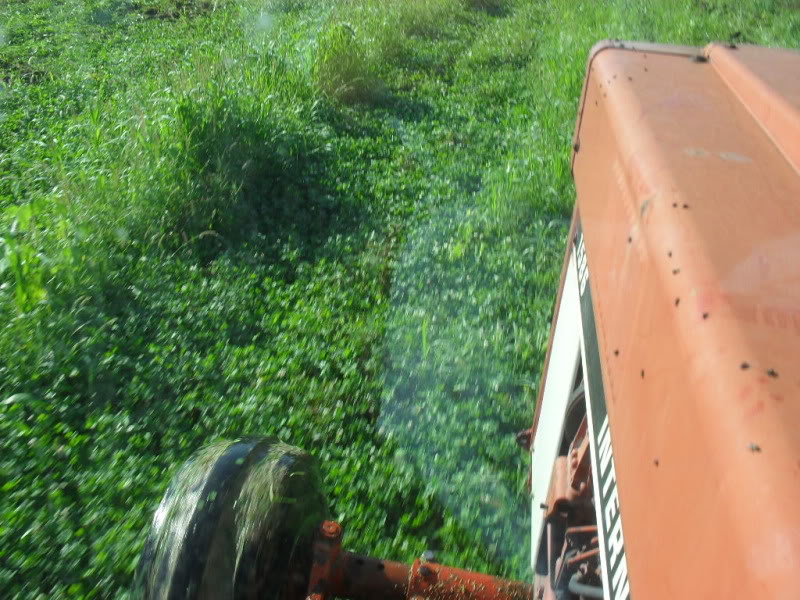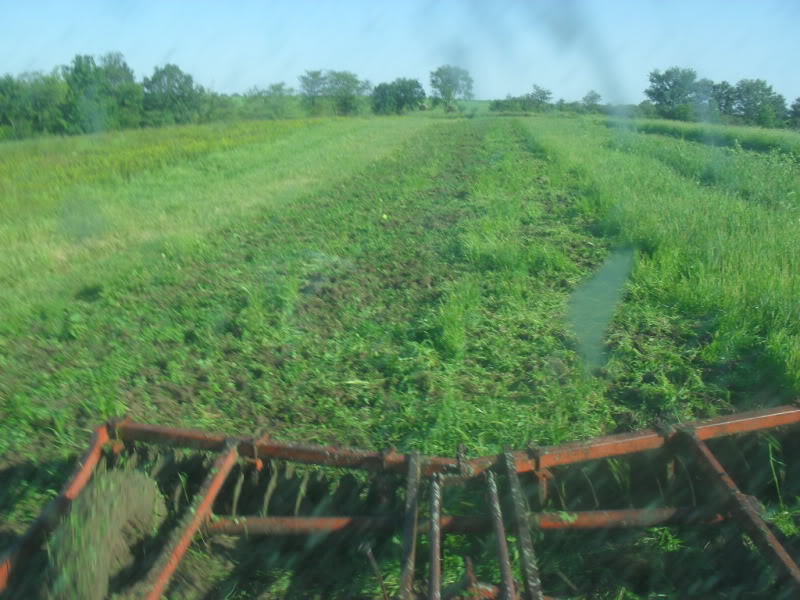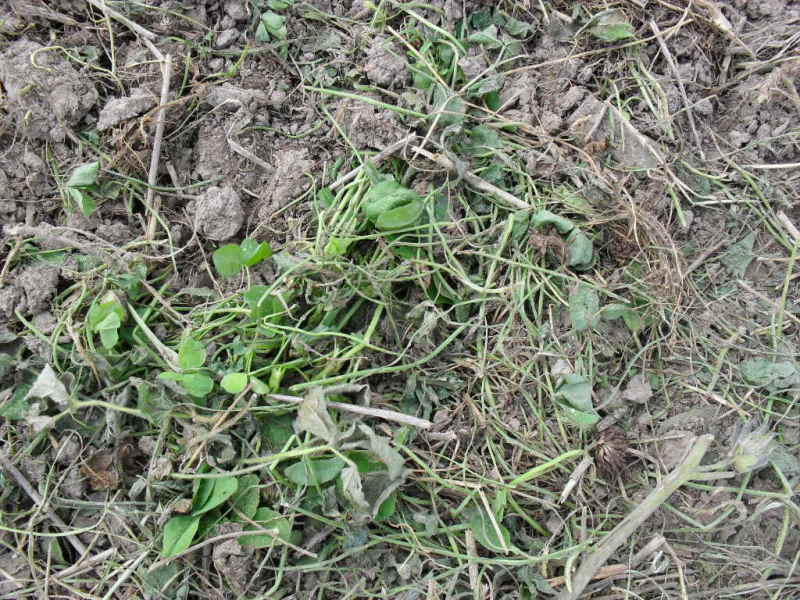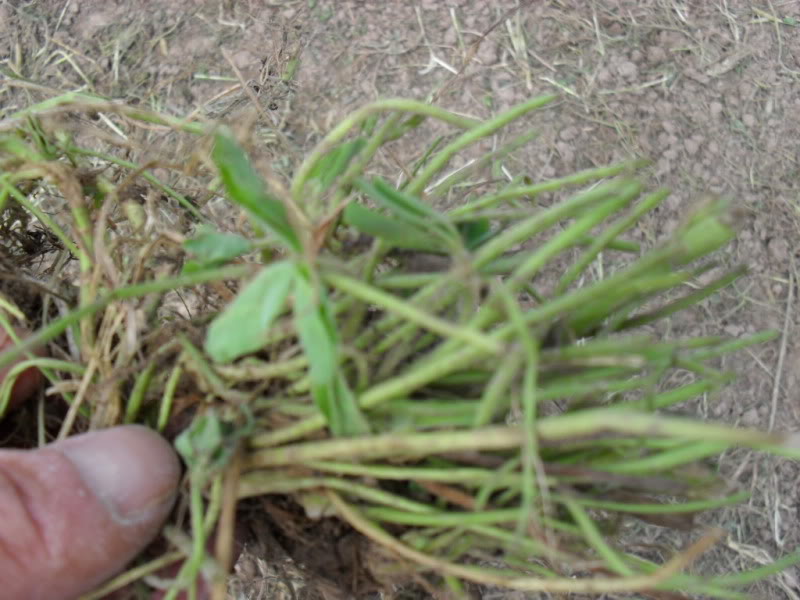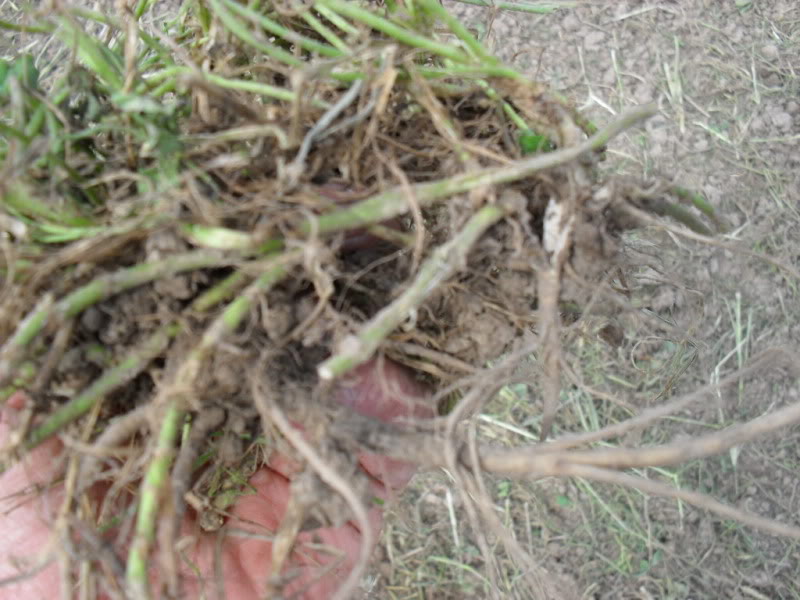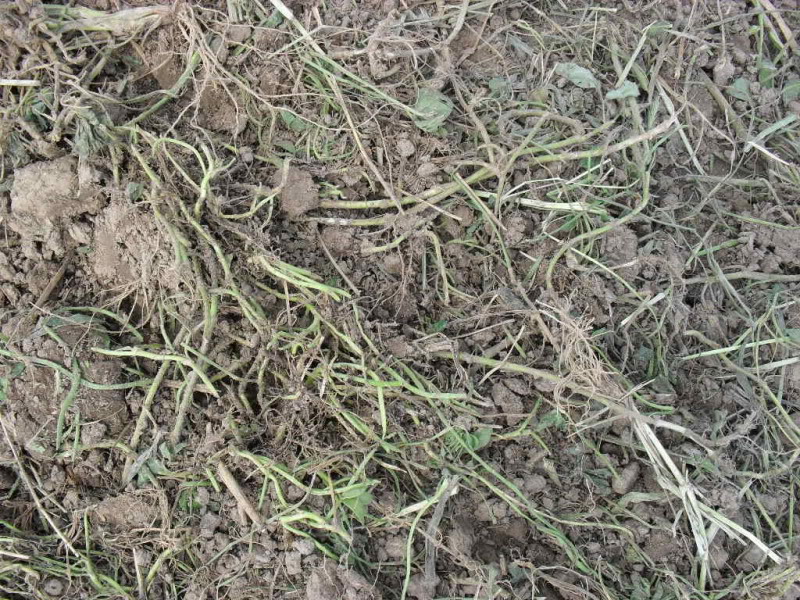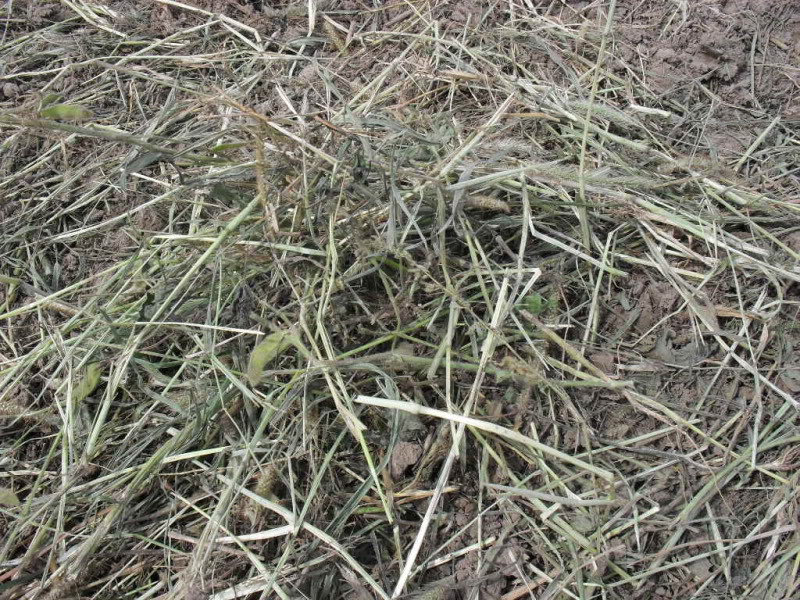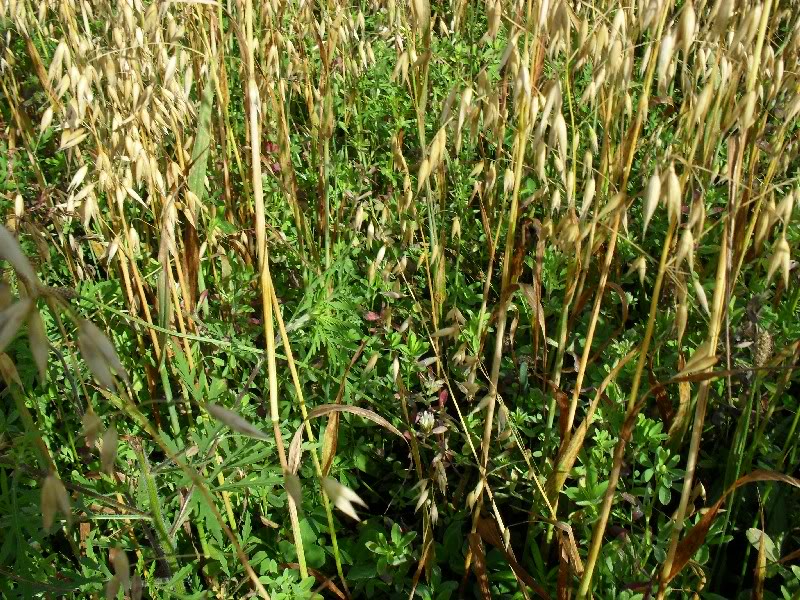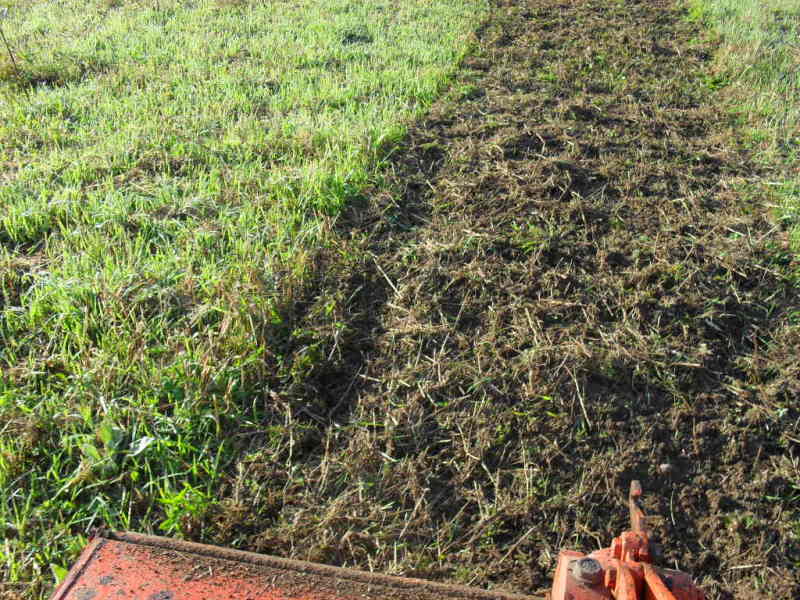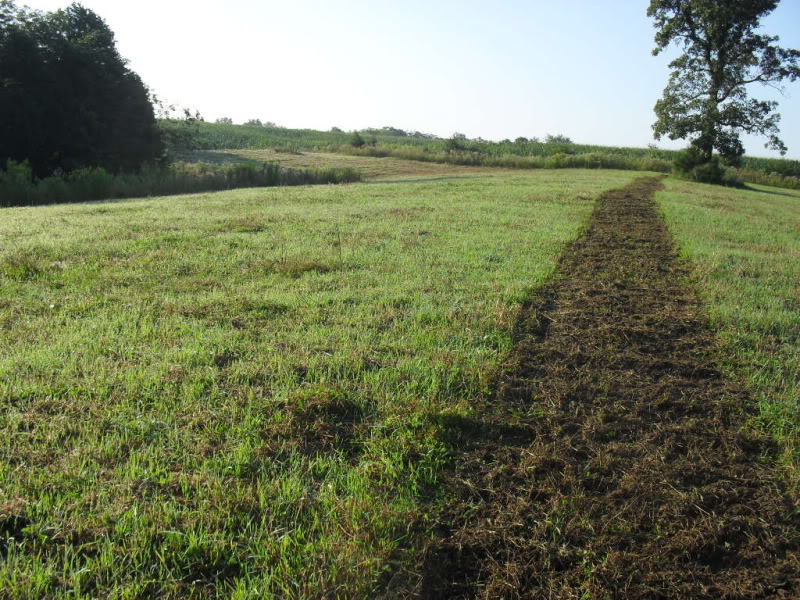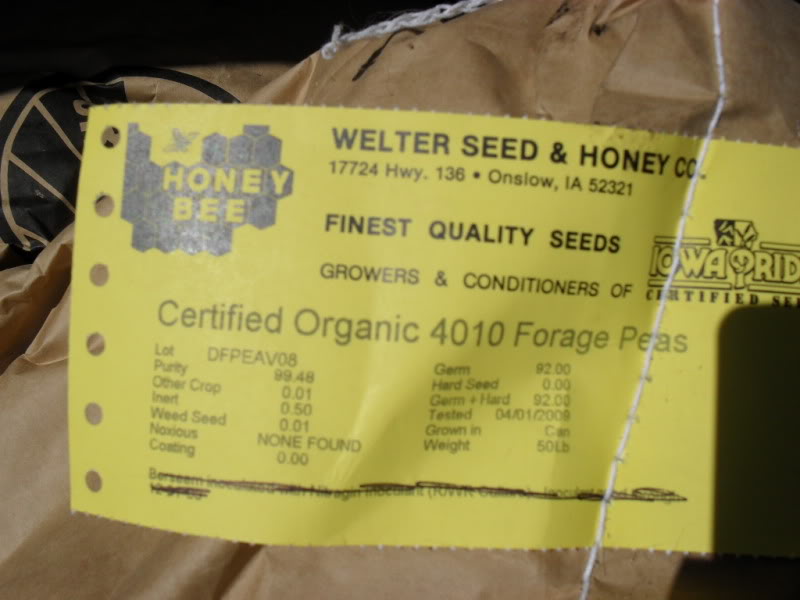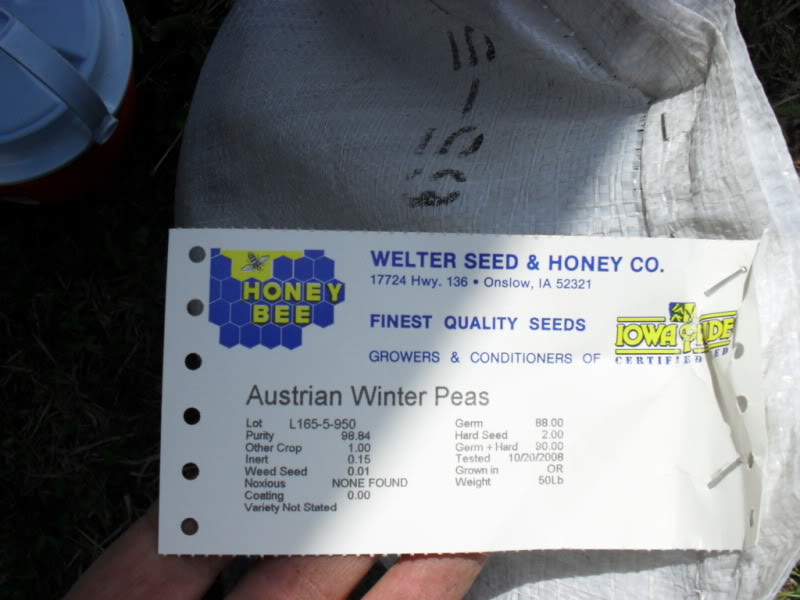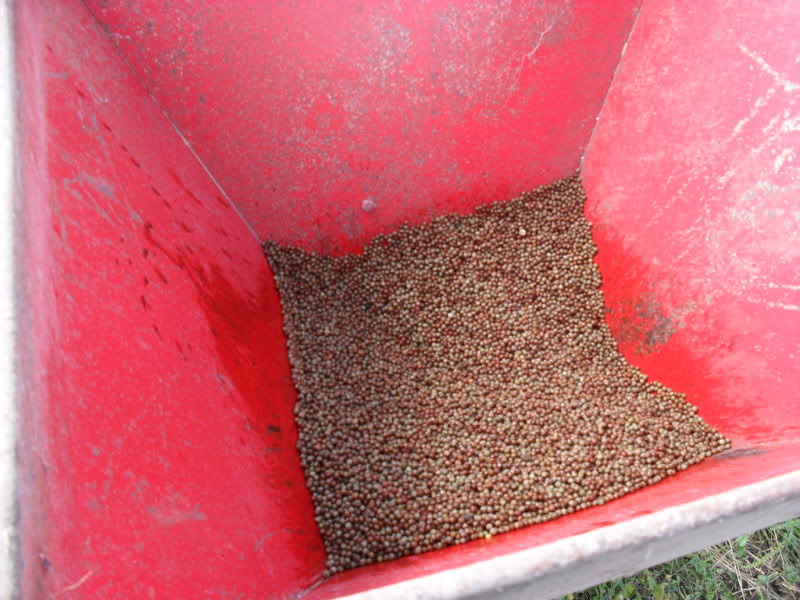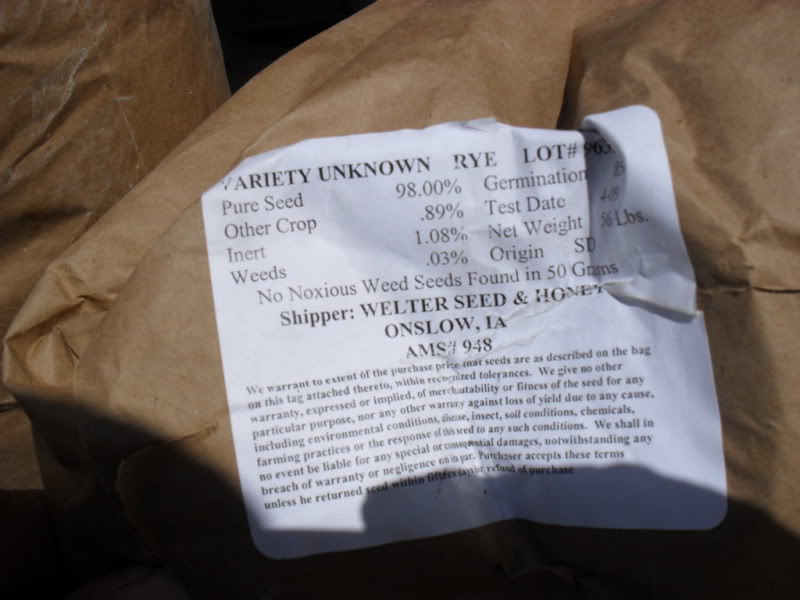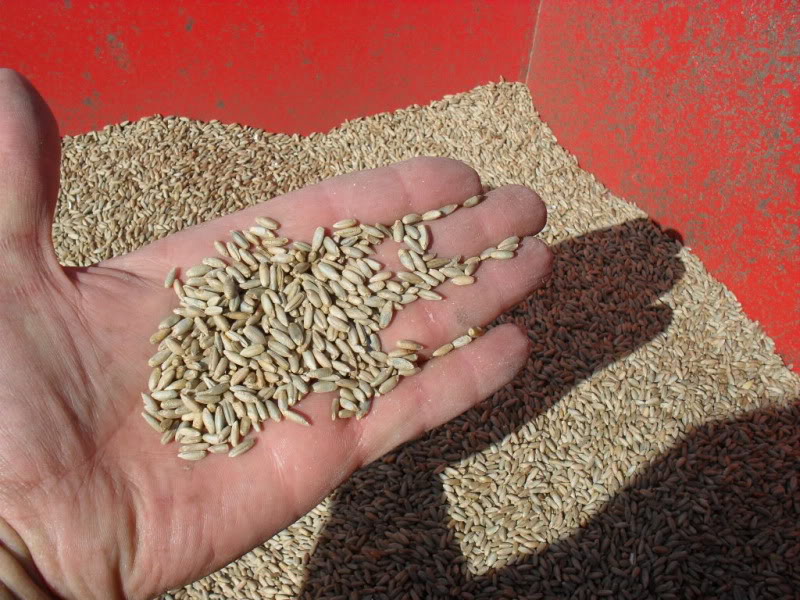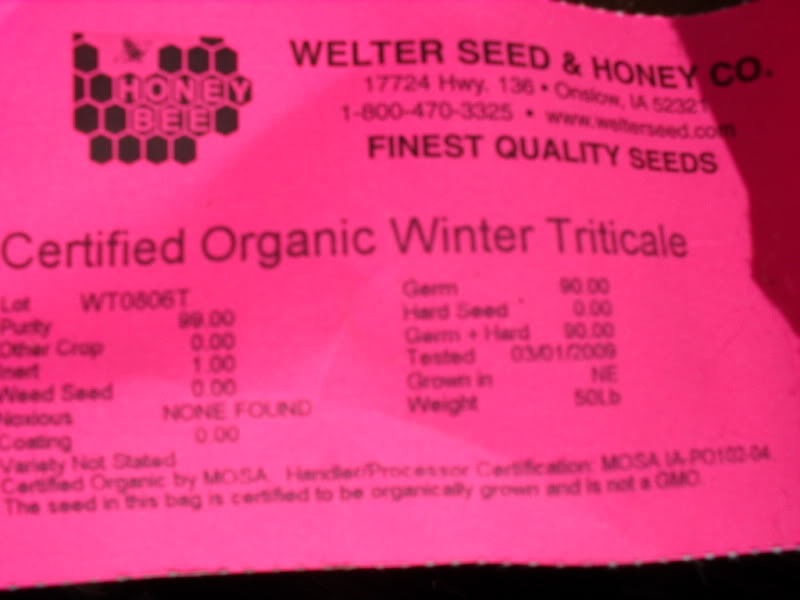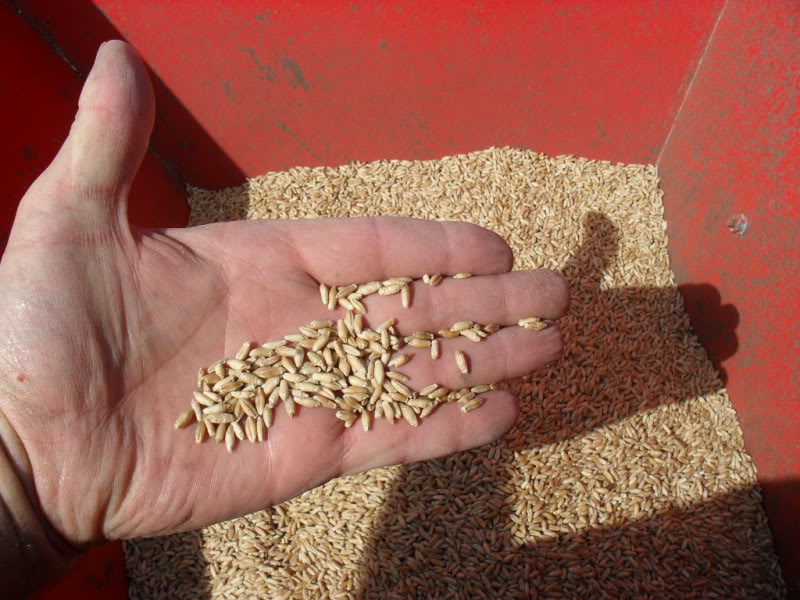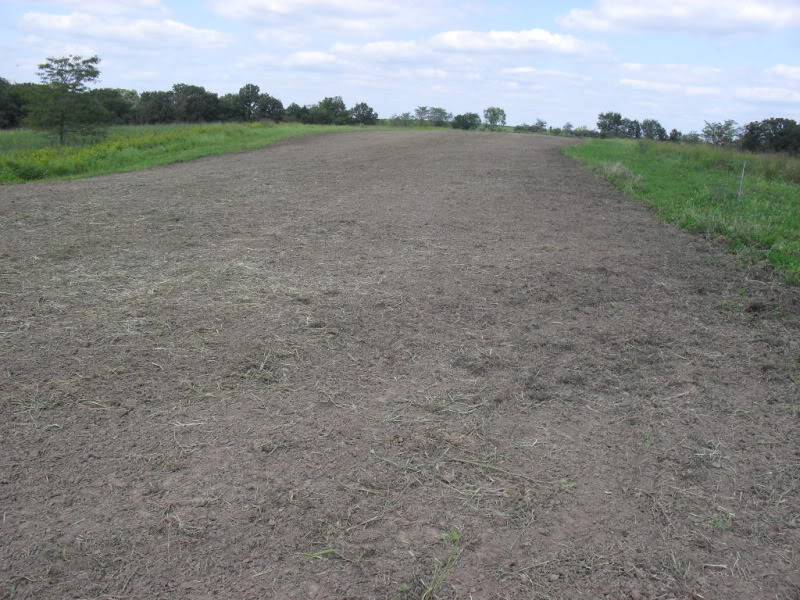A lot of people think I am crazy for cutting down all that green clover.
Well...$25 worth of clover seed to = $60-80 worth of nitrogen seems like a no brainer to me...


I posted this in the brassica thread but some of you may have intensive grazing or feel that your cereal grains need a boost after planting so I wanted to post some options here as well.
Generally I prefer to fertilize brassicas heavily and frost seed or spring plant a plow down clover and then fall plant cereal grains. The N levels should be high enough (from the plowing down the clover) and P&K levels brought up to snuff when the brassics were planted, so that the grains would generally not need any additional fertilizer.
For those not yet on a crop rotation of legumes, brassicas and cereal grains then you may need to fertilize your cereal grains at planting and if grazing is heavy, top dress some additonal N after the winter rye is 2-3 weeks old.
This information wil help you better understand your options and the problems that go along with trying to top dress nitrogen versus tillig it in. Remember also that rye is a nitrogen scavenger and can pull postassium fro deep in the soil and recyle both for use by the next crop...man you can't beat that with a stick! :way:
The following is taken from this link
The Fertilizer Institute
Urea (46-0-0) — A solid nitrogen product typically applied in granular form. It can be combined with ammonium nitrate and dissolved in water to make liquid nitrogen fertilizer known as urea ammonium nitrate or UAN solution.
Ammonium nitrate (34-0-0) — Another solid nitrogen product typically applied in granular form is valued for its use on pasture lands and specialty crops such as citrus.
Ammonium sulfate (21-0-0) — A solid product that is largely a byproduct of coke ovens, where sulfuric acid is used to remove ammonia evolved from the coal.
All forms of N can cause some minor leaf burning and this will be worse if applied when leaves ar wet, so wait till dew has dried before applying.
Top dress nitrogen onto fall cereal grains 2-4 weeks after emergence but be aware that doing so may cause rye, wheat or oats to grow rapidly, become stemmy and unpalatable making it counterproductive.
Determining your needs sometimes requires some trial and error and deciding if the time and money to add more fertilizer is worth the effort or perhaps and absoulte must.
Urea (46-0-0) is the most commonly available but it is inportant to apply it ahead of a minimum of a 1/2" rain
This link will explain more about using urea
Fertilizer Urea
Urea Losses to the Air
Urea breakdown begins as soon as it is applied to the soil. If the soil is totally dry, no reaction happens. But with the enzyme urease, plus any small amount of soil moisture, urea normally hydrolizes and converts to ammonium and carbon dioxide.
This can occur in 2 to 4 days and happens quicker on high pH soils. Unless it rains, urea must be incorporated during this time to avoid ammonia loss. Losses might be quite low in the spring if the soil temperature is cold.
Urea fertilizer can be coated with certain materials, such as sulfur, to reduce the rate at which the nitrogen becomes available to plants. Under certain conditions these slow-release materials result in more efficient use by growing plants. Urea in a slow-release form is popular for use on golf courses, parks, and other special lawn situations.
If you can find urea treated with urease inhibitor then rain fall will ne of less importance and Agrotain makes such a product:
Where Agrotain fits
Agrotain International is the world’s largest producer of StabilizedNitrogen™ fertilizers.
Agrotain is both a company name and a product name. Agrotain International makes three ag products that protect urea fertilizer from loss.
Agrotain is a liquid urease inhibitor that can be impregnated onto dry urea or tank mixed with liquid fertilizer that contains urea such as urea-ammonium nitrate (UAN). The active ingredient is N-(n-butyl) thiophosphoric triamide (NBPT).
Agrotain Plus is a dry concentrate nitrogen stabilizer. It contains the urease inhibitor NBPT and dicyandiamide, a nitrogen stabilizer. When added to UAN, it minimizes volatilization, denitrification, and leaching of nitrogen for the urea portion of UAN.
Ammonium nitrate (34-0-0)
AN is a much more stable form of nitrogen in regards to volatilization losses, however it is difficult to purchase because of it's use in making bombs and liability issues for fertilizer dealers. If it is available it is an excellent albeit more expensive source of N for top dressing.
Nitrogen Sources
Another popular form of dry nitrogen fertilizer is ammonium-nitrate (NH4-NO3). Ammonium-nitrate is 34% nitrogen, by weight. It is produced by reacting anhydrous ammonia (NH3) with nitric acid (HNO3). When dissolved in water, the ammonium (NH4+) and nitrate (NO3_) fractions disassociate. The nitrate fraction remains dissolved in the soil water.
The ammonium fraction becomes bound to negatively charged soil particles. Both the ammonium and nitrate fractions are available for direct plant uptake and neither form is subject to appreciable volatilization losses. The volatilization losses from surface applied ammonium nitrate are therefore usually quite small, especially compared to urea-based fertilizers.
There are safer versions of AN being developed so perhaps it will once again be more readily available.
Honeywell Develops Safer Ammonium Nitrate-Based Fertilizer
Ammonium sulfate (21-0-0)
Advantages = Minimal leaching loss, easy to use, safe to handle and sulfur boost if needed.
Disadvantages = Delayed availability during nitrification and has a high loss potential on calcareous soils if it is not incorporated into the soil.
Ammonium sulfate is often one of the most expensive forms of N but when compared to the risk of applying urea and ending up with no rain, it's worth the cost!
Some FAQ's about AS
Ammonium Sulfate & Soil pH: Fact Vs. Fiction
NITROGEN FERTILIZER: What Should I Use
Purchasing Nutrients for Hay and Forage Crops
Compare N sources
Fertilizer and Lime materials
I really urge everyone to consider a crop rotation that includes legumes that can replace all or at least a large portion of your N needs, lowering your costs and time spent adding it.






